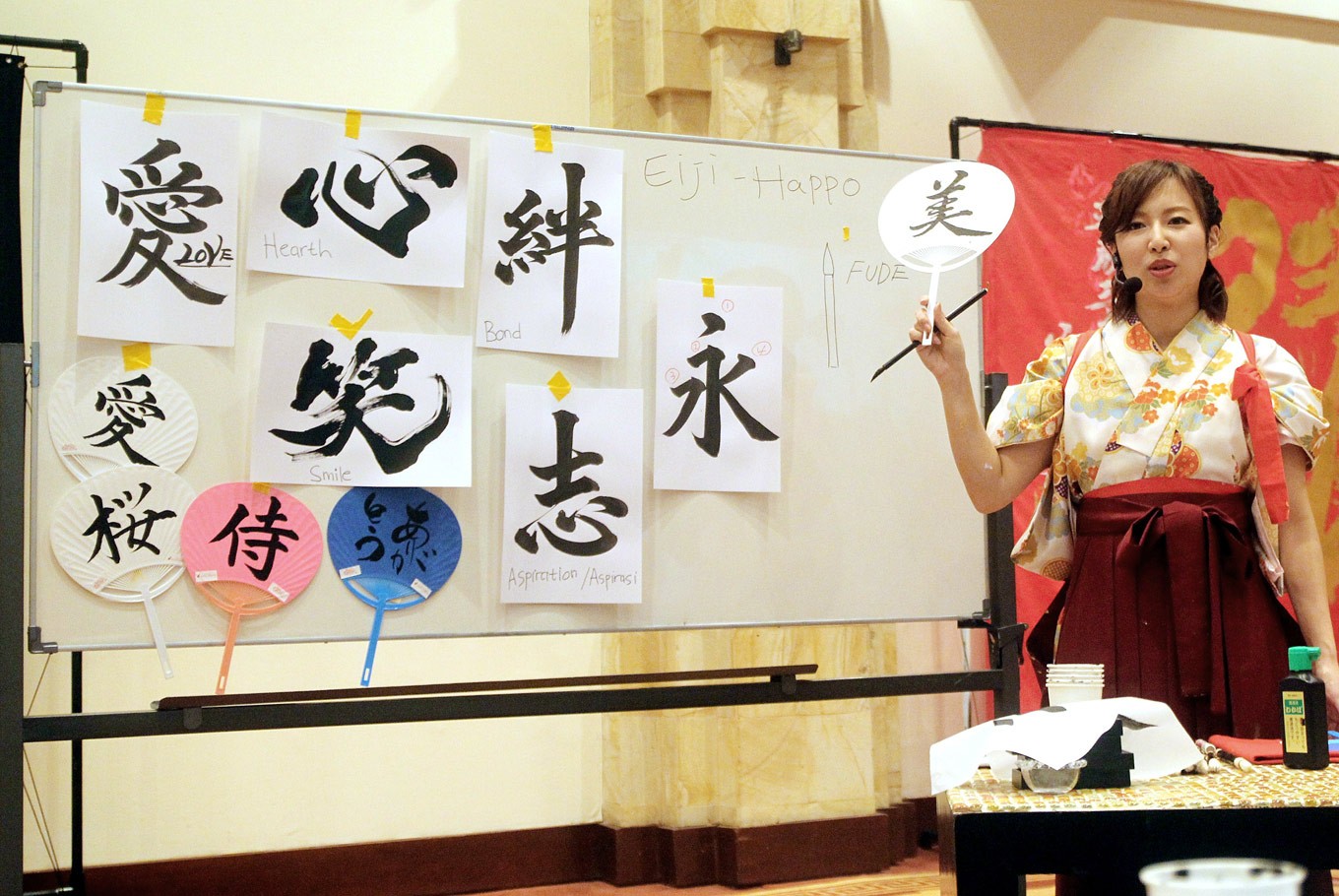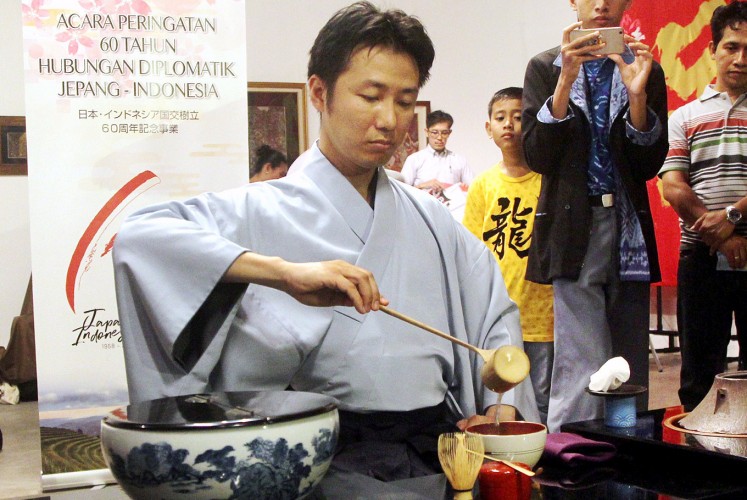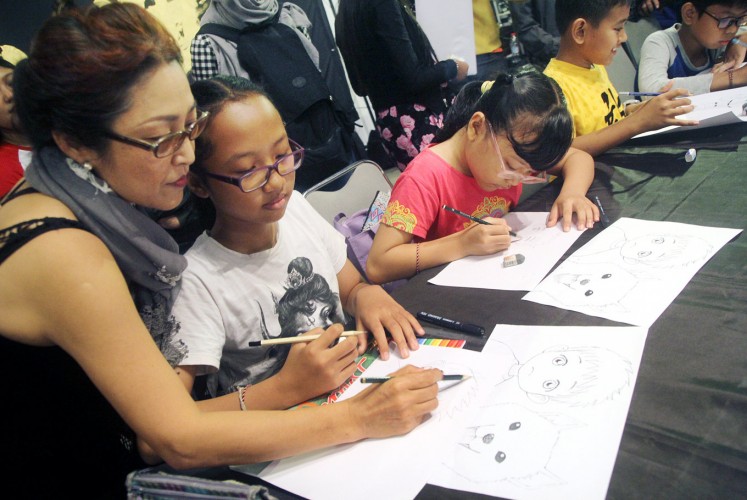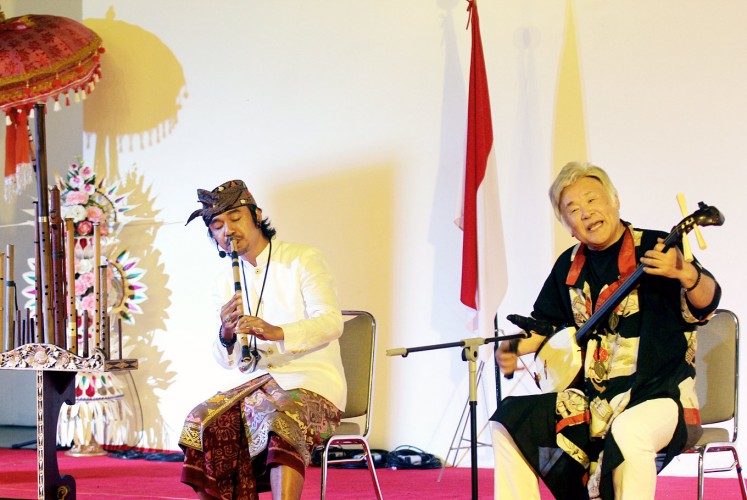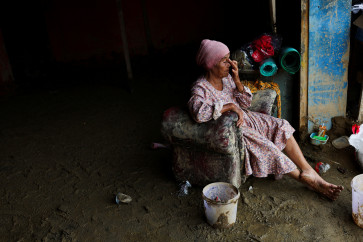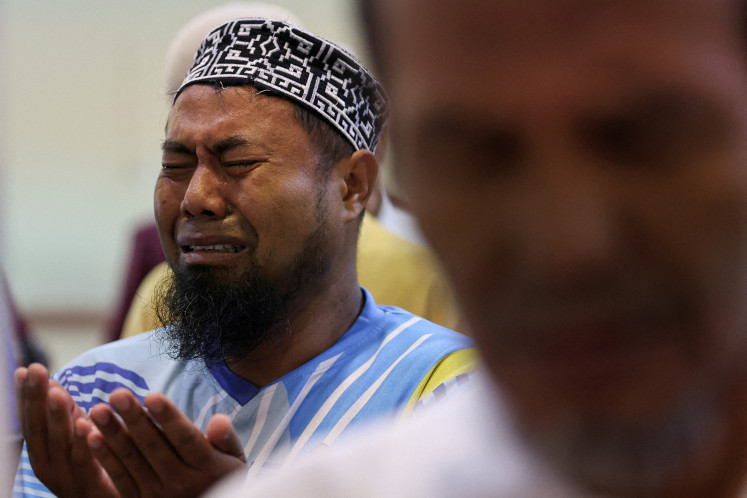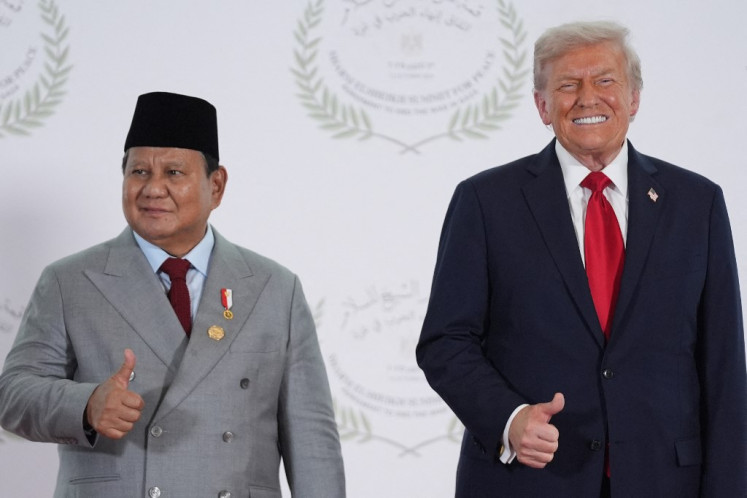Popular Reads
Top Results
Can't find what you're looking for?
View all search resultsPopular Reads
Top Results
Can't find what you're looking for?
View all search resultsJapanese, Balinese artists celebrate friendship
“We would like to show that Japan and Indonesia have enjoyed a very warm and close relationship for decades and Bali is a testament to that closeness,” Japan Consul General Hirohisa Chiba said.
Change text size
Gift Premium Articles
to Anyone
I
n the hands of Kiju Kitamura, the shamisen, a traditional three-stringed instrument first created in 16th century Japan, is transformed into a sort of modern electric guitar.
Kiju Kitamura possesses the magnetic aura of a rock star that instantly caught the attention of the audience, the majority of whom were students and youngsters from Denpasar.
His face is delicately handsome with hair painted blonde. His smile is infectious. Yet, it was the way he played the shamisen — a traditional three-stringed instrument first created in 16th century Japan — that truly intoxicated the crowd.
His dynamic stage style, his fast-paced melodies and dramatic plectrum shredding immediately spurred the audience to stand up and applaud loudly.
The applause continued throughout the performance in which Kitamura performed alongside two taiko drummers, Daisuke Ogawa and Keita Kanazashi.
Kitamura, who first picked up the shamisen when he was a sixth-grader, is 26 years old now and his youthful and contemporary performance showed how, with a correct approach, today’s youth could be made to fall in love with an ancient instrument.
Art of tea: Shusaku Yasumaru shows how to serve traditional Japanese tea. (JP/Zul Trio Anggono)The performance was part of a three-day art festival to commemorate the 60th anniversary of the establishment of diplomatic relations between Japan and Indonesia.
The event, which ran from Jan. 26 to 28, was co-organized by the Consulate General of Japan in Denpasar, the STIMIK STIKOM-Bali Information Technology Institute and Bentara Budaya Bali.
It featured scores of performances and activities aimed at highlighting the beauty of Japanese culture, ranging from workshops on manga and calligraphy, as well as tea ceremony demonstrations and film screenings.
Cultivating creativity: Japanese manga artist Tamiko Tsuneoshi teaches children how to draw during a manga workshop at Bentara Budaya Bali on Saturday. (JP/Zul Trio Anggono)
In addition, the stage was also dedicated to several Balinese master performers and troupes, including local guitar legend Ketut Riwin, flute sensation Gus Teja and the godfather of jegog bamboo instruments, Ketut Suwentra.
“We would like to show that Japan and Indonesia have enjoyed a very warm and close relationship for decades and Bali is a testament to that closeness,” Japan Consul General Hirohisa Chiba said.
Chiba, who donned a gorgeous batik shirt at the opening ceremony, pointed to the increasing number of Japanese tourists, a growing interest among Japanese to learn Balinese arts, as well as the rising number of Balinese art troupes performing in Japan as evidence of that closeness.
More evidence is the assistance bestowed by the government of Japan to numerous vital development projects in Bali, including mangrove conservation in Suwung, coastal erosion mitigation in Sanur, Kuta and Nusa Dua and microhydro power plants in Jatiluwih.
That closeness found its visual and aural expression throughout the festival, particularly during the collaboration performances.
Two cultures: Shaminsen maestro Baisho Matsumoto (right) and Balinese flute maestro Gus Teja collaborate during a show on stage at Bentara Budaya Bali on Saturday. (JP/Zul Trio Anggono)On the first night, Riwin shared the stage with Baisho Matsumoto, the silver-haired charismatic musician who has performed across the globe for more than 40 years.
Their renditions of “Kokoro No Tomo,” a Japanese song that is popular here, and “Bengawan Solo,” an Indonesian song widely known in Japan, received thundering applause from the audience.
On the second day, Suar Dwi Stri -- a troupe made up of female Japanese musicians, enchanted the audience with their performance of grantang in collaboration with a jegog troupe. Grantang and jegog are Balinese traditional bamboo instruments.
“I believe that historically speaking, the cultural relation between Japan and Indonesia started way before the 1940s, when the Japanese military drove out the Dutch from Indonesia,” eminent cultural scholar I Made Bandem said.
Bandem admitted that data on that cultural relation was scarce, but he suggested that double ikat cloth was a good starting point for future research.
“This is a specific and unique textile, a technique that is only known in Bali, India and Japan,”
Double ikat involves resist-dyeing both the warp and weft prior to weaving. In Bali’s Tenganan village, the textile created using this method is called geringsing, in India’s Gujarat patola and on Japan’s Okinawa it is tate-yoko gasuri.

